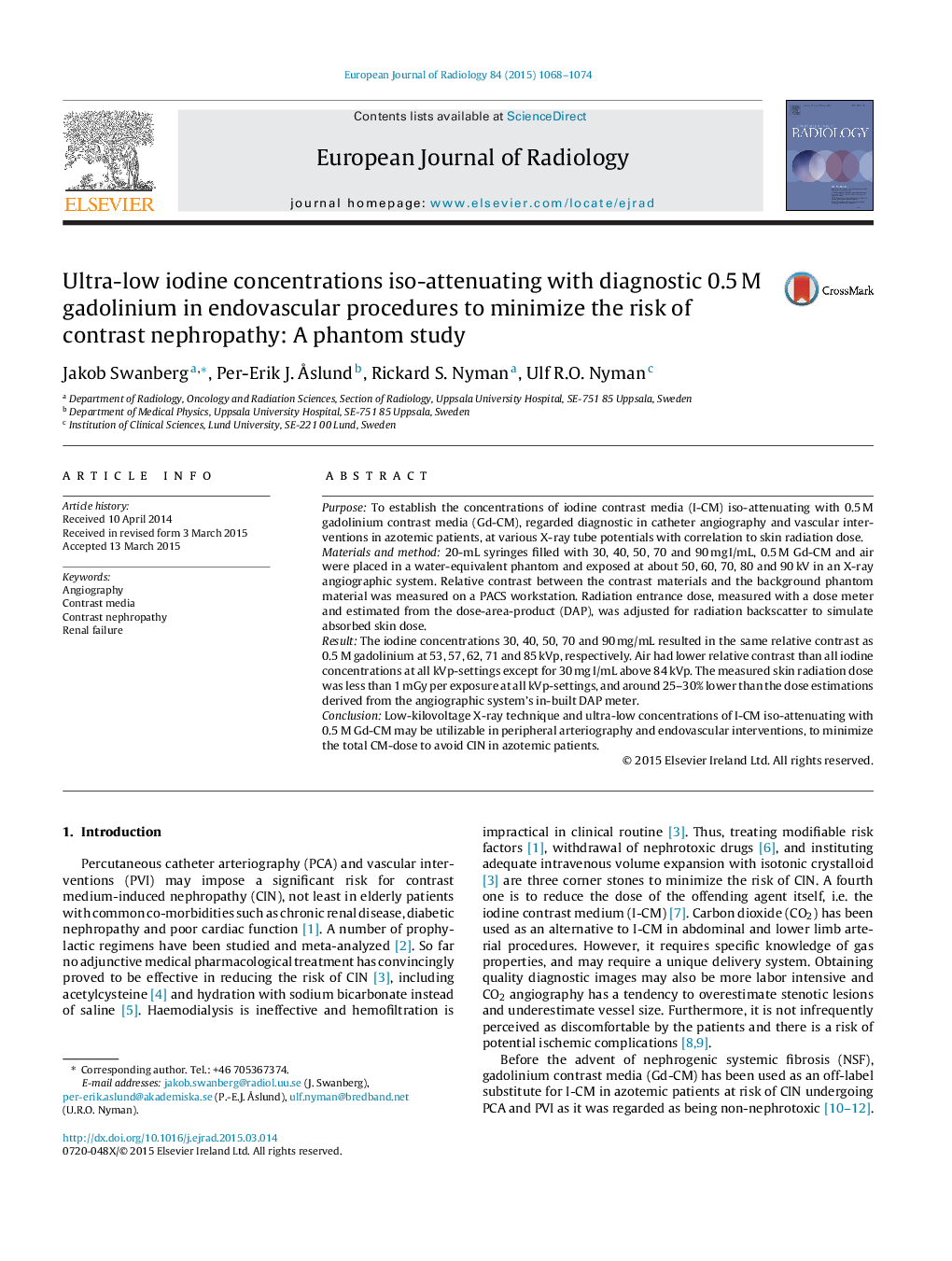| Article ID | Journal | Published Year | Pages | File Type |
|---|---|---|---|---|
| 4225104 | European Journal of Radiology | 2015 | 7 Pages |
PurposeTo establish the concentrations of iodine contrast media (I-CM) iso-attenuating with 0.5 M gadolinium contrast media (Gd-CM), regarded diagnostic in catheter angiography and vascular interventions in azotemic patients, at various X-ray tube potentials with correlation to skin radiation dose.Materials and method20-mL syringes filled with 30, 40, 50, 70 and 90 mg I/mL, 0.5 M Gd-CM and air were placed in a water-equivalent phantom and exposed at about 50, 60, 70, 80 and 90 kV in an X-ray angiographic system. Relative contrast between the contrast materials and the background phantom material was measured on a PACS workstation. Radiation entrance dose, measured with a dose meter and estimated from the dose-area-product (DAP), was adjusted for radiation backscatter to simulate absorbed skin dose.ResultThe iodine concentrations 30, 40, 50, 70 and 90 mg/mL resulted in the same relative contrast as 0.5 M gadolinium at 53, 57, 62, 71 and 85 kVp, respectively. Air had lower relative contrast than all iodine concentrations at all kVp-settings except for 30 mg I/mL above 84 kVp. The measured skin radiation dose was less than 1 mGy per exposure at all kVp-settings, and around 25–30% lower than the dose estimations derived from the angiographic system's in-built DAP meter.ConclusionLow-kilovoltage X-ray technique and ultra-low concentrations of I-CM iso-attenuating with 0.5 M Gd-CM may be utilizable in peripheral arteriography and endovascular interventions, to minimize the total CM-dose to avoid CIN in azotemic patients.
